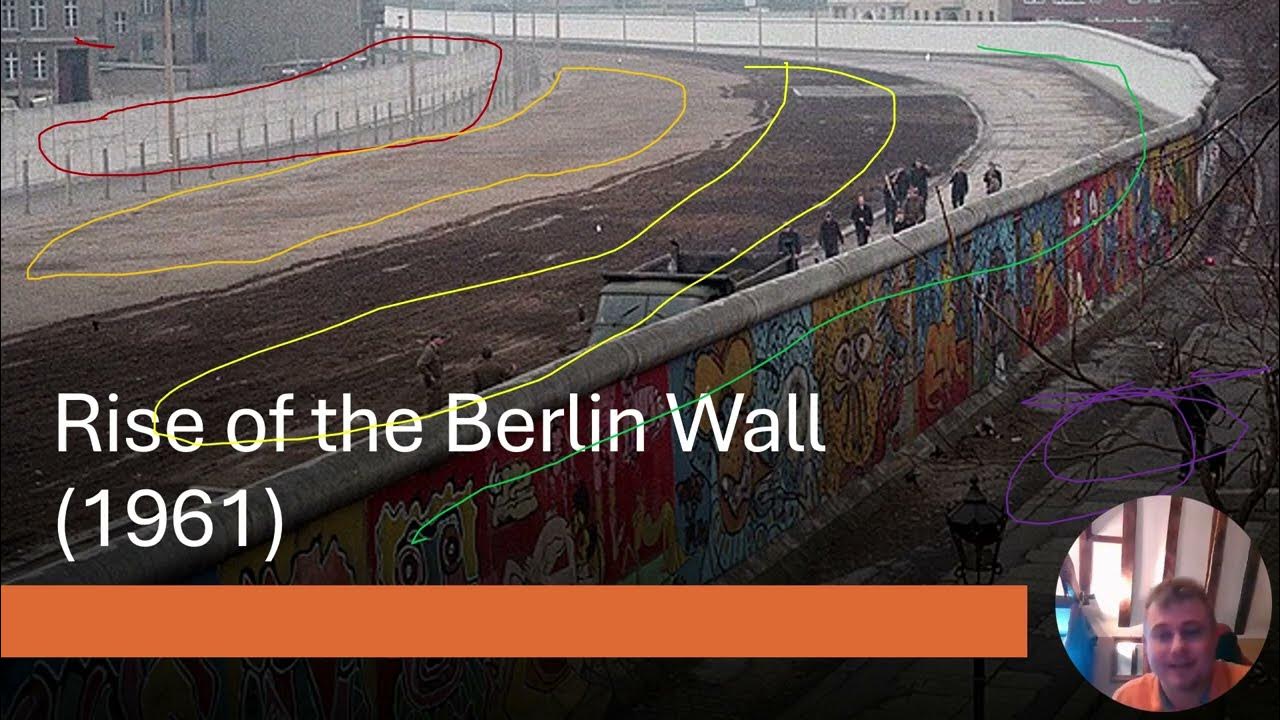The Century, America's Time: Poisoned Dreams (2 of 3)
Summary
TLDRThis script recounts the Cuban Missile Crisis, highlighting the tense standoff between the US and the Soviet Union, and its potential to trigger a global war. It also delves into the Civil Rights Movement, showcasing the struggles and sacrifices of activists like James Baldwin, Martin Luther King Jr., and the Freedom Riders, emphasizing their fight for racial equality and justice.
Takeaways
- 🌐 The script discusses the Cuban Missile Crisis, highlighting the tense 13-day standoff between the US and the Soviet Union over nuclear missiles in Cuba.
- 🚀 President Kennedy and his advisors viewed the crisis as a superpower confrontation, ultimately leading to a policy that any missile launched from Cuba would be seen as an attack by the Soviet Union.
- 🛡️ The US military was put on high alert, and a naval blockade was established around Cuba to prevent the delivery of offensive weapons.
- 🛳️ Amidst global tension, Soviet ships eventually turned back, leading to the withdrawal of missiles in exchange for a US pledge not to invade Cuba.
- 🔥 The script also touches on the Civil Rights Movement, describing the racial segregation and the struggle for equality in the United States during the 1960s.
- 🚌 The Freedom Riders, a group of activists, challenged segregation by riding buses into the Deep South, facing violent reactions and arrests.
- 🎓 The Student Nonviolent Coordinating Committee (SNCC) was highlighted as a key organization in the Civil Rights Movement, emphasizing the role of young people in the fight for racial equality.
- 🔒 The Albany campaign and the Birmingham campaign were mentioned as significant efforts in the Civil Rights Movement, despite facing violent resistance and ultimately failing to immediately change the law.
- 📰 The Birmingham campaign, in particular, gained national and international attention due to the brutal tactics used by law enforcement, including the use of dogs and fire hoses against protesters.
- 🌈 The March on Washington in 1963, where Martin Luther King Jr. delivered his famous 'I Have a Dream' speech, was a pivotal moment in the Civil Rights Movement, drawing a massive crowd and highlighting the call for racial equality.
Q & A
What was the primary reason for the Cuban Missile Crisis?
-The Cuban Missile Crisis was triggered by the Soviet Union placing nuclear missiles in Cuba, which the United States saw as a direct threat and demanded their removal.
How did President Kennedy respond to the Cuban Missile Crisis?
-President Kennedy responded by placing the US military on the highest alert, initiating a naval blockade around Cuba, and demanding the removal of the missiles. He also declared that any missile launched from Cuba would be treated as an attack by the Soviet Union.
What was the 'quarantine' mentioned in the script?
-The 'quarantine' referred to a naval blockade set up by the US Navy around Cuba to prevent any ships carrying offensive weapons from reaching the island.
How long did the Cuban Missile Crisis last?
-The Cuban Missile Crisis lasted for 13 days in October.
What was the outcome of the Cuban Missile Crisis?
-The crisis ended with the Soviet Union agreeing to withdraw the missiles from Cuba in exchange for a US pledge not to invade Cuba.
What was James Baldwin's perspective on being a negro in the United States in 1961?
-James Baldwin described being a negro in the United States as a constant state of rage, highlighting the deep-seated racial divide and the separate worlds of black and white.
What was the significance of the Freedom Riders in the Civil Rights Movement?
-The Freedom Riders were activists who rode public buses into the Deep South to challenge segregation in bus stations, despite facing significant violence and resistance. Their actions helped to pressure the Kennedy administration to enforce desegregation laws.
What was the role of the Student Nonviolent Coordinating Committee (SNCC) in the Civil Rights Movement?
-The SNCC was a key organization in the Civil Rights Movement, particularly known for its young members who were willing to take risks and engage in nonviolent protest, including filling up jails to challenge the system.
What was the Albany campaign in the Civil Rights Movement?
-The Albany campaign was an effort in Albany, Georgia, where civil rights activists, including SNCC, attempted to desegregate the city. Despite mass arrests, the campaign ultimately failed to achieve its goals.
What was the impact of the Birmingham campaign on the Civil Rights Movement?
-The Birmingham campaign was a pivotal moment in the Civil Rights Movement, where the violent response of local law enforcement to peaceful protests, including the use of dogs and fire hoses, drew national and international attention to the struggle for racial equality.
What was the significance of the March on Washington in 1963?
-The March on Washington was a massive demonstration calling for civil and economic rights for African Americans. It featured Martin Luther King Jr.'s iconic 'I Have a Dream' speech, which helped to galvanize support for the civil rights cause.
Outlines

Cette section est réservée aux utilisateurs payants. Améliorez votre compte pour accéder à cette section.
Améliorer maintenantMindmap

Cette section est réservée aux utilisateurs payants. Améliorez votre compte pour accéder à cette section.
Améliorer maintenantKeywords

Cette section est réservée aux utilisateurs payants. Améliorez votre compte pour accéder à cette section.
Améliorer maintenantHighlights

Cette section est réservée aux utilisateurs payants. Améliorez votre compte pour accéder à cette section.
Améliorer maintenantTranscripts

Cette section est réservée aux utilisateurs payants. Améliorez votre compte pour accéder à cette section.
Améliorer maintenantVoir Plus de Vidéos Connexes
5.0 / 5 (0 votes)






